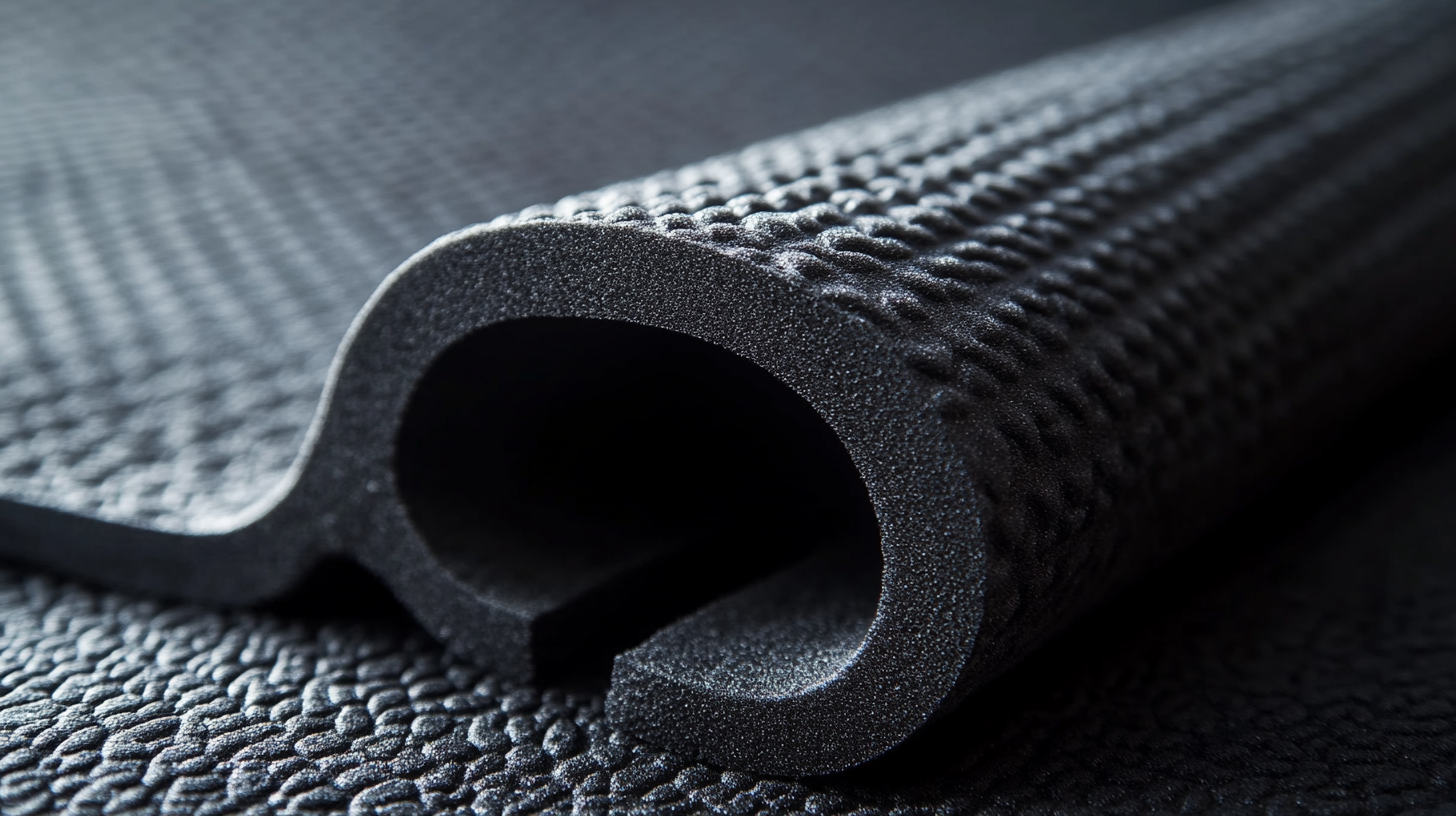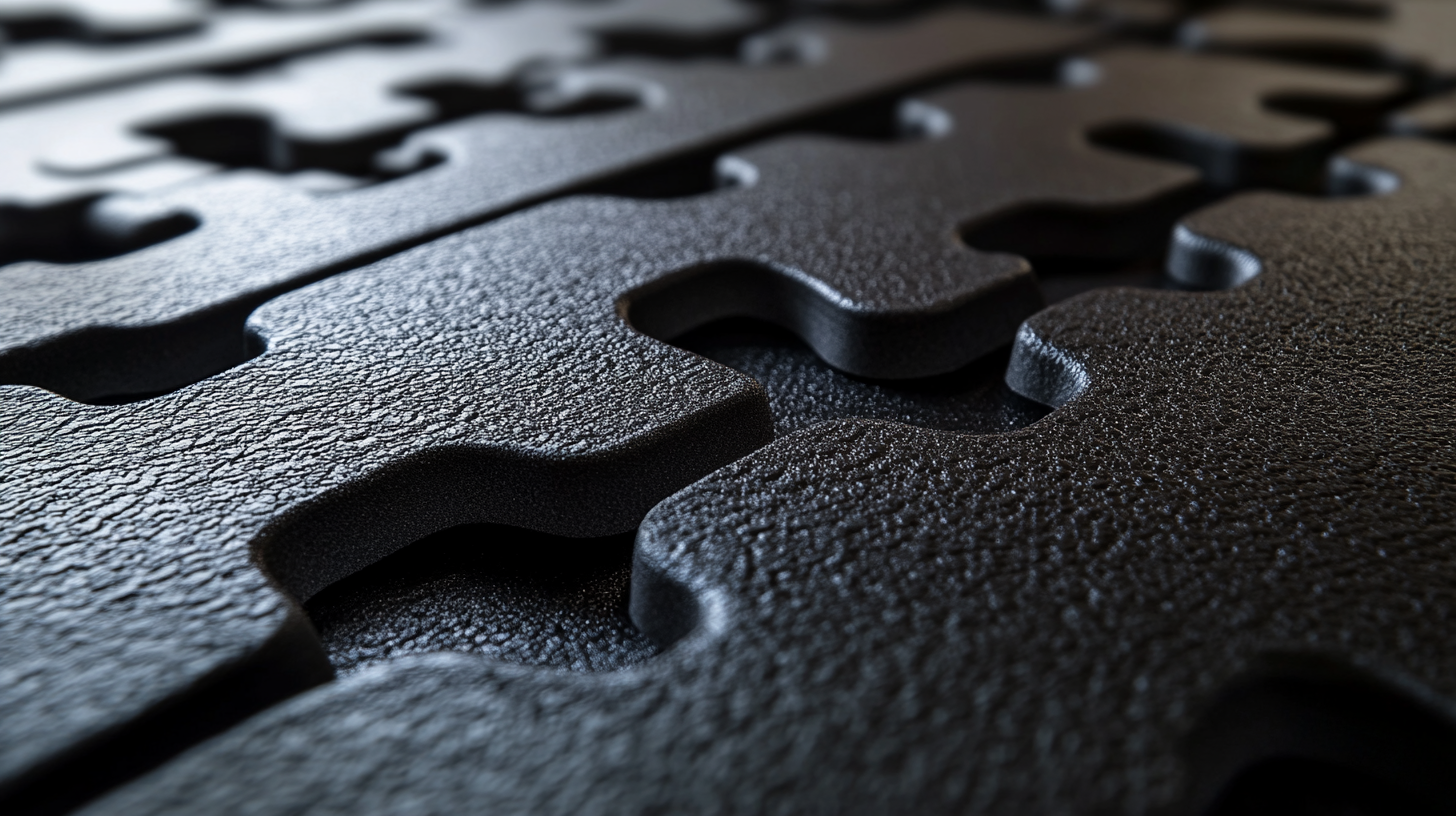In recent years, the foam mat industry has witnessed significant growth, driven by increasing demand for versatile and safe flooring solutions across various applications, including fitness, play, and camping. According to a report by Market Research Future, the global foam mat market is projected to reach USD 1.8 billion by 2025, growing at a CAGR of 4.2% from 2020 to 2025. As buyers seek quality and durability in their purchases, particular attention is being given to products like the Abc Foam Mat, which combines comfort, safety, and environmental sustainability. This blog aims to provide insights into the latest global trends in foam mats in 2025, comparing key features and benefits while guiding buyers in making informed decisions. Whether for home use or professional settings, understanding these trends will be essential for consumers looking to invest in high-quality foam mat solutions.

As we move towards 2025, the foam mat industry is poised for significant advancements, driven by emerging technologies and evolving consumer preferences. One of the most notable trends is the incorporation of eco-friendly materials in foam mat production. Manufacturers are increasingly using recycled and biodegradable materials to create mats that not only offer comfort and support but also contribute to environmental sustainability. This shift is appealing to consumers who are becoming more conscious of their ecological footprint.
Another key development in foam mat technology is the integration of smart features. The rise of the Internet of Things (IoT) has paved the way for mats that can monitor physical activity, track usage patterns, and even provide feedback for improving workouts. These innovative mats often come equipped with sensors that can connect to mobile apps, offering users a tailored experience that enhances their fitness routines. This tech-savvy approach to foam mats is expected to attract fitness enthusiasts and tech users alike, reshaping the market landscape.
Furthermore, advances in manufacturing processes are allowing for the creation of specialized foam mats tailored to specific activities, such as yoga, Pilates, and even high-intensity workouts. These mats are designed with varying densities and textures to cater to different user needs, providing optimal support and safety. As these trends unfold, buyers will find an expanding array of options that combine utility, technology, and sustainability, reinforcing the importance of making informed purchasing decisions in this competitive market.

When selecting foam mats, buyers should consider several key factors that influence their decision-making process. According to a recent market report by Grand View Research, the global foam mat market is projected to reach USD 5.3 billion by 2025, driven by growing awareness of health and wellness, along with increased participation in fitness activities. This statistic underscores the importance of understanding material properties, thickness, and durability when choosing foam mats, as these aspects can directly impact user experience and product longevity.
One crucial factor is the density of the foam, which often correlates with the mat's cushioning and support. The American Society for Testing and Materials (ASTM) standards indicate that higher-density foams tend to perform better under repetitive stress, making them ideal for athletic environments. Additionally, buyers should take into account the environmental impact of their choices; many manufacturers are now offering eco-friendly options made from recycled materials, aligning with the growing consumer trend towards sustainability. As the market evolves, informed buyers will increasingly prioritize both performance and ecological considerations in their foam mat selections.
When evaluating foam mats, durability stands out as a critical factor for buyers. Various materials used in foam mat production have distinct lifespan characteristics influenced by their composition. According to the "Global Foam Mats Market Report 2023," materials like EVA (ethylene-vinyl acetate) are noted for their excellent resistance to wear and aging, making them a popular choice in high-traffic areas such as gyms and playrooms. EVA mats can typically last up to 10 years with proper care, showcasing their reliability for long-term use.
In contrast, PVC (polyvinyl chloride) foam mats, while often less expensive, present a trade-off in terms of durability. The same report indicates that PVC mats generally have a shorter lifespan of around 5 to 7 years, making them less ideal for environments where heavy use is expected. Additionally, factors such as environment, usage frequency, and maintenance practices play crucial roles in the durability of foam mats. A study from the "Journal of Material Sciences" suggests that regular cleaning and avoiding exposure to harsh chemicals can significantly extend the lifespan of foam mats, regardless of the material used.
Choosing the right foam mat material based on durability considerations can greatly enhance user experience and satisfaction, especially for consumers looking for value over time.

In 2025, the foam mat market is expected to reflect significant changes driven by evolving consumer preferences and increasing market demand. As health and wellness become paramount concerns for many, we see a growing inclination towards products that offer comfort and support. This trend is bolstered by the wider awareness of the benefits of quality sleep, which also extends to various sleep products such as foam mats. With consumers seeking better sleep environments, foam mats that provide pressure relief and adaptability are likely to gain popularity.
Moreover, the foam mat market is poised for substantial growth, paralleling trends observed in related sectors like the luxury mattress industry. As disposable income rises, consumers are more willing to invest in high-quality sleeping solutions. Additionally, the rise of fitness culture and health-conscious lifestyles is contributing to increased demand for versatile foam mats used in a variety of settings, including exercise, yoga, and relaxation. As market dynamics evolve, it will be crucial for buyers to keep an eye on product innovations and consumer preferences to make informed purchasing decisions.
The foam mat industry is witnessing a surge in innovative designs and applications, catering to various sectors including sports, healthcare, and hospitality. According to a report by Market Research Future, the foam mat market is projected to reach USD 780 million by 2025, reflecting a compound annual growth rate (CAGR) of 5.3% from 2020. This growth is driven by the increasing demand for versatile flooring solutions that offer safety and comfort.
In the sports industry, foam mats are being designed with advanced cushioning technology to enhance performance and reduce the risk of injury. For instance, interlocking foam tiles are gaining popularity in gyms and fitness centers, providing a durable surface that absorbs impact effectively. Meanwhile, in the healthcare sector, antimicrobial foam mats are becoming essential in hospitals and clinics, as they not only ensure patient safety but also contribute to infection control. A study published in the Journal of Hospital Infection highlighted that the use of high-quality foam mats can reduce slip hazards by over 40%, showcasing their critical role in healthcare environments.
Furthermore, the hospitality industry is embracing designer foam mats that blend aesthetics with functionality. Hotels are increasingly opting for foam mats that complement their interior design while providing guests with comfort and safety. As noted in a report by Technavio, the global hospitality sector's investment in premium flooring solutions is expected to increase by 7% annually, highlighting the important place of innovative foam mats in creating welcoming environments.
| Industry | Innovative Design Features | Applications | Market Growth Rate (2023-2025) | Key Players |
|---|---|---|---|---|
| Sports and Fitness | Eco-friendly materials, shock absorption | Yoga mats, flooring for gyms | 7.5% | Adidas, Liforme |
| Childcare | Non-toxic, bright colors | Play mats, nursery flooring | 6.2% | BabyCare, Skip Hop |
| Healthcare | Antimicrobial properties, ergonomic designs | Patient flooring, therapy mats | 5.8% | 3M, Medline |
| Automotive | Heat resistance, sound insulation | Car mats, soundproofing materials | 8.0% | Ford, Toyota |
| Construction | Durability, weather resistance | Temporary flooring, insulation | 6.5% | DuPont, BASF |
